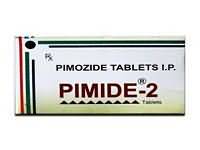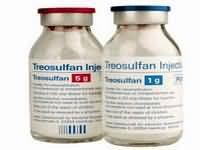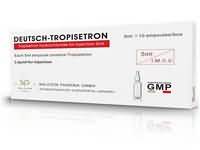Pimozide

CLINICAL USE
Antipsychotic
DOSE IN NORMAL RENAL FUNCTION
2–20 mg daily
PHARMACOKINETICS
Molecular weight :461.5 %Protein binding :99 %Excreted unchanged in urine : <1 Volume of distribution (L/kg) :No datahalf-life – normal/ESRD (hrs) :55–150/– DOSE IN RENAL IMPAIRMENT
GFR (mL/MIN)
20 to 50 : Dose as in normal renal function 10 to 20 : Dose as in normal renal function <10 : Start with low dose and increase according to response DOSE IN PATIENTS UNDERGOING RENAL REPLACEMENT THERAPIES
CAPD :Unknown dialysability. Dose as in GFR <10 mL/min HD :Unknown dialysability. Dose as in GFR <10 mL/min HDF/high flux :Unknown dialysability. Dose as in GFR <10 mL/min CAV/VVHD :Unknown dialysability. Dose as in normal renal function IMPORTANT DRUG INTERACTIONS
Potentially hazardous interactions with other drugs Anaesthetics: enhanced hypotensive effect Analgesics: increased risk of convulsions with tramadol; enhanced hypotensive and sedative effects with opioidsAnti-arrhythmics: increased risk of ventricular arrhythmias with anti-arrhythmics that prolong the QT interval – avoid concomitant use with amiodarone, disopyramide and procainamide (risk of ventricular arrhythmias)Antibacterials: avoid concomitant use with macrolides and moxifloxacin (increased risk of ventricular arrhythmias)Antidepressants: concentration increased by sertraline and possibly paroxetine – avoid with paroxetine; increased risk of ventricular arrhythmias with maprotiline and tricyclics – avoid concomitant use; increased plasma level of tricyclicsAnti-epileptics: antagonises anticonvulsant effect Antifungals: avoid concomitant use with imidazoles and triazolesAntimalarials: avoid concomitant use with artemether/lumefantrine; increased risk of ventricular arrhythmias with mefloquine and quinine – avoid concomitant useAntipsychotics: increased risk of ventricular arrhythmias with phenothiazines – avoid concomitant useAntivirals: concentration increased by amprenavir, atazanavir, efavirenz, indinavir, nelfinavir, ritonavir and saquinavir, increased risk of ventricular arrhythmias – avoid concomitant useAnxiolytics and hypnotics: increased sedative effectsAprepitant: avoid concomitant use Atomoxetine: increased risk of ventricular arrhythmiasBeta-blockers: increased risk of ventricular arrhythmias with sotalol Diuretics: increased risk of ventricular arrhythmias due to hypokalaemiaIvabradine: increased risk of ventricular arrhythmiasSibutramine: increased risk of CNS toxicity – avoid concomitant use ADMINISTRATION
Reconstition
– Route
Oral Rate of Administration
–Comments
– OTHER INFORMATION
ECG required before treatment. To be repeated annually.
See how to identify renal failure stages according to GFR calculation
See how to diagnose irreversible renal disease
Home









